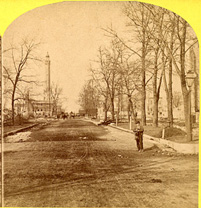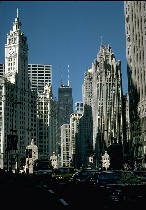 First in a series published on Disciples Today reflecting on the firestorm that occurred in the International Churches of Christ and told as a parable of the Great Chicago Fire and lessons from Scripture. To read the entire series of articles, see After the Fire.
First in a series published on Disciples Today reflecting on the firestorm that occurred in the International Churches of Christ and told as a parable of the Great Chicago Fire and lessons from Scripture. To read the entire series of articles, see After the Fire.
Our family of churches is recovering from a firestorm. We naively thought it would never happen. But it has. The smoke is clearing and our hearts are healing. What now after the fire? In trying to understand what God is showing us, I have learned a bit from history and Scripture. What follows is simply my own journey in understanding. Perhaps it will be helpful to you.
By 1871 the city of Chicago had rapidly grown from a simple fort to a thriving town of 334,270, promising all the hope of the newly civilized American frontier. Shipping on the Great Lakes converged with the railroads on the western shores of Lake Michigan. Hard-working immigrants made new lives shaping "The City of Big Shoulders." Everything seemed possible. Then disaster struck.
 About 9 p.m. on Sunday night, October 8, 1871 a simple barn fire erupted at 137 DeKoven Street on Chicago's southwest side. The initial report mistook the blaze for another recently extinguished fire. When the watchman finally decided the situation was serious enough, he gave the alarm to the telegraph operator. But he delivered the wrong information, sending the fire brigade to an erroneous address. When the error was discovered, the operator refused to correct his alarm because he thought it would confuse the firemen. Hope of controlling the fire was lost. Strong winds blew the fire northeast through the entire city.
About 9 p.m. on Sunday night, October 8, 1871 a simple barn fire erupted at 137 DeKoven Street on Chicago's southwest side. The initial report mistook the blaze for another recently extinguished fire. When the watchman finally decided the situation was serious enough, he gave the alarm to the telegraph operator. But he delivered the wrong information, sending the fire brigade to an erroneous address. When the error was discovered, the operator refused to correct his alarm because he thought it would confuse the firemen. Hope of controlling the fire was lost. Strong winds blew the fire northeast through the entire city.By Tuesday morning 300 people were dead and another 100,000 were homeless. Approximately three and one-third square miles of the heart of the city had burned with property destruction valued at $200 million. Nearly every building was destroyed except the iconic Water Tower on Michigan Avenue that remains today as a tribute to the character of the people of Chicago.
 How could this have possibly happened in a fast-growing, thriving city with fire departments? Why did it take such a short time to burn down this promising new city? How did the people ever recover?
How could this have possibly happened in a fast-growing, thriving city with fire departments? Why did it take such a short time to burn down this promising new city? How did the people ever recover?The "rest of the story" is equally dramatic. One author describes the new construction rising from the ashes as being, "of the most substantial and massive character. Nearly all are far more costly and elegant than the structures destroyed in the fire, which stood on the same sites. Our citizens have not been satisfied to simply replace the old city, but it has been their ambition to build it more beautiful and more attractive than it was before it fell a victim to the restless avalanche of fire."
1898: By this time Chicago was the second largest city in America, with a population of over 1,600,000--nearly five times that of the time of the fire,
Today in numerous architectural textbooks and coffee table books, Chicago is the most featured American city.
When you think of modern architecture, you think of Chicago, the birthplace of the skyscraper, the cradle of twentieth-century American design, and the home of enduring works by such iconic figures as Louis Sullivan, Ludwig Mies van der Rohe, and Frank Lloyd Wright. Idealized through tourism and celebrated in the groves of academe, the city's majestic skyline and landmark buildings remain a living testament to the modern movement.
 For over 100 years, the City of Chicago has been indisputably recognized as the world capital of historical and contemporary landmarks of modern architecture...Chicago remains the birthplace of modern architecture and the modern high-rise have impacted every modern city throughout the world - from Hong Kong to Paris.
For over 100 years, the City of Chicago has been indisputably recognized as the world capital of historical and contemporary landmarks of modern architecture...Chicago remains the birthplace of modern architecture and the modern high-rise have impacted every modern city throughout the world - from Hong Kong to Paris.Grace and Truth,
Roger Lamb
This email address is being protected from spambots. You need JavaScript enabled to view it.
To read the entire series, see After the Fire

